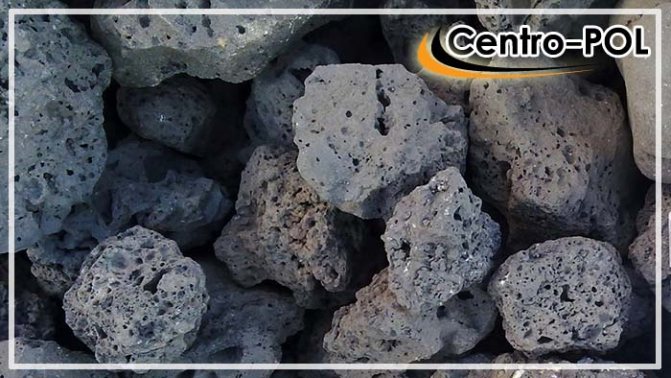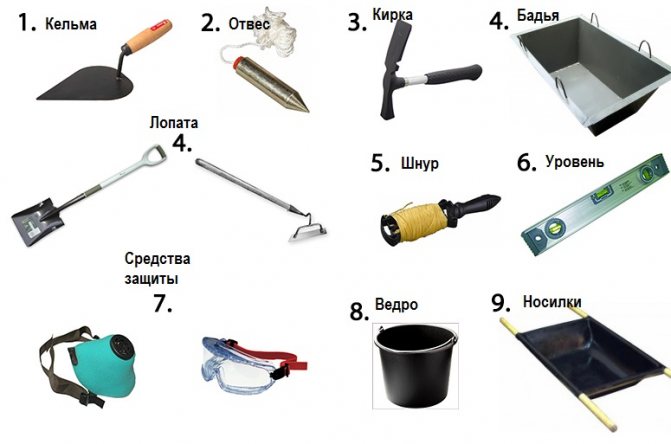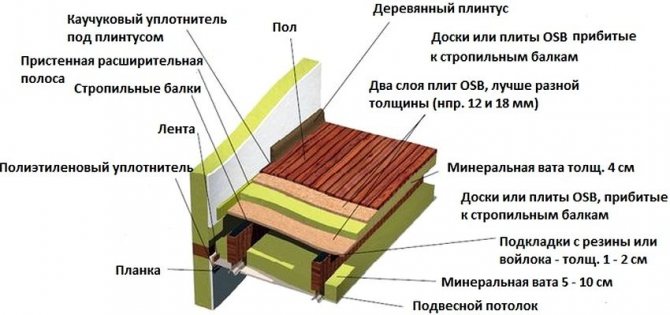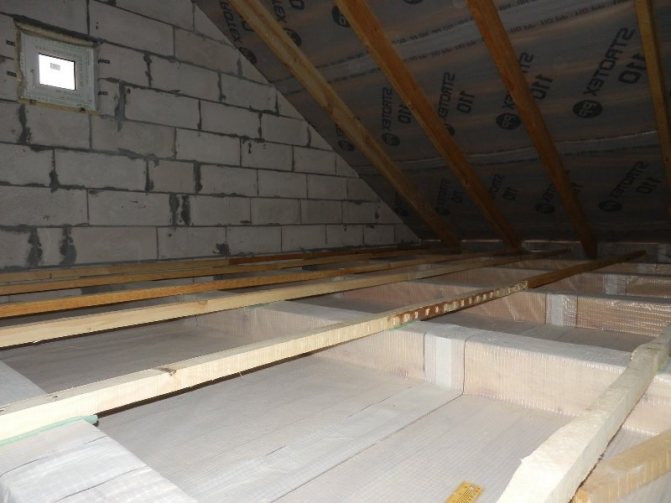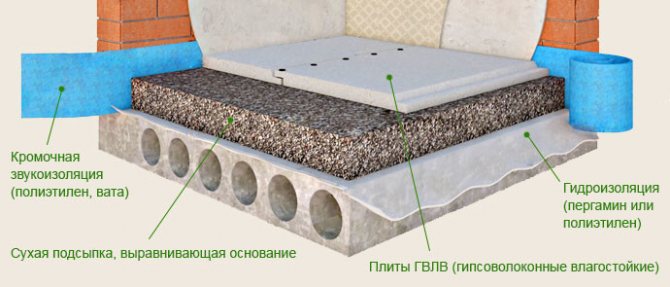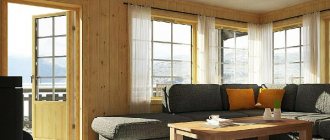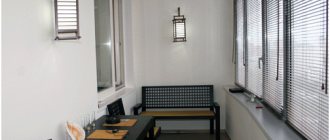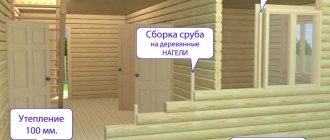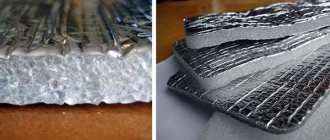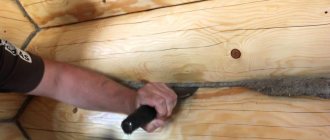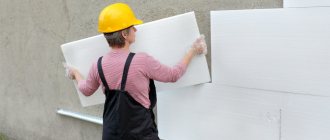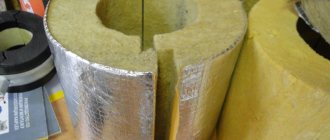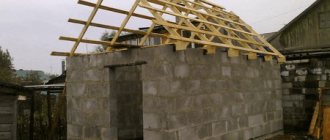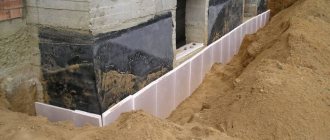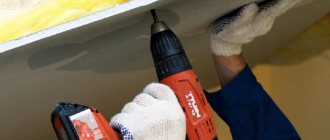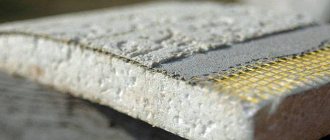The main types of insulation
Today, there are two optimal options: mineral wool (or glass wool) and foam. Each of these materials has its own positive and negative qualities.
Mineral wool is produced either in rolls or in sheets. The material has such positive aspects:
- the thermal conductivity index has a value of 0.041 W / (m ° C), this characteristic may vary depending on the density of the material itself, but such a change will be insignificant;
- good sound insulation, here just the density is of great importance;
- fire resistance: if a fire occurs, then in the absence of open fire, the material will quickly fade out;
- ease of fixing: the structure of mineral wool makes it easy to cope with uneven surfaces, and it also easily eliminates voids.
But this material also has disadvantages:
- poor moisture insulation: if such cotton wool gets wet, then the thermal insulation will worsen by 2 times;
- the installation technology itself has more complex features;
- rolls tend to roll, this factor is influenced by the dishonesty of contractors or improper independent insulation of walls from cinder blocks.
Polyfoam (extruded polystyrene foam), in contrast to the first option, is denser in structure, which makes it more durable. The moisture absorption rate is about 10 times lower than that of mineral wool. But all the qualities significantly affect the price of the material.
Polyfoam can be presented in the form of plates, less often in rolls. Of the positive aspects of such material, the following can be noted:
- good resistance to moisture: even if water gets on the surface, the walls will not lose their thermal insulation properties;
- applicable on flat areas, while covering them well;
- depending on the use of certain brands, it can have good fire resistance, therefore, like mineral wool, if there is no open fire near the hearth, this material will quickly fade out.
Among the negative aspects, the following characteristics should be highlighted:
- low level of noise insulation;
- some types of polystyrene absolutely do not tolerate fire, therefore, when insulating the walls of a house, you should carefully select a brand, otherwise during a fire it can emit corrosive smoke and support the fire itself;
- this material of the usual type has a rather fragile structure, which, in turn, leads to certain problems in installation.
There is an opinion that rodents like this material. But it is not so. Rodents do not eat polystyrene, but they equip their home in it, since it is warm enough.
How easy it is to insulate a cinder block house. Insulation of a cinder block house
Houses built from cinder blocks, unlike their wooden and brick counterparts, need additional insulation from the outside. The thermal conductivity of the cinder block varies between 0.35-0.6 W / (m 0C), which means that to ensure a normal temperature in the house in our harsh climate, it would be necessary to erect a building from cinder block slabs with a thickness of about 1.5- 2 meters, which is extremely unprofitable. That is why buildings made of cinder block slabs of standard thickness are additionally insulated from the outside.
Should you choose external or internal insulation? Professional builders recommend insulating the cinder block house from the outside, since after laying the heat-insulating layer inside the room, the dew point located between the coolant and the wall shifts.As a result, moisture will accumulate on the walls, contributing to the spread of moldy fungi.
Another disadvantage of internal insulation is that the heat-insulating material "steals" centimeters of the area of the room. That is why it is rational to insulate the cinder block house from the outside.
Features of insulation
- The choice of materials should be made according to the weather conditions inherent in your region. Somewhere it is enough to insulate only the walls and the foundation with cheap foam, and somewhere thermal insulation is required not only from the inside, but also from the outside.
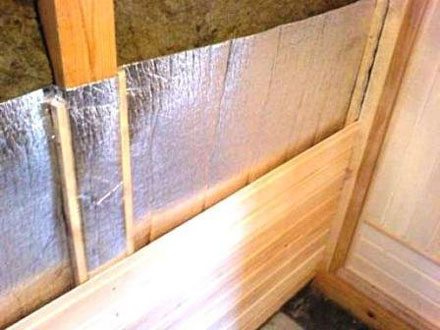
It is advisable to fix heat-reflecting material on top of the insulation
- Insulating seams and joints will greatly reduce heat loss. There are special foil tapes that not only prevent heat from escaping from the room, but also effectively reflect it.
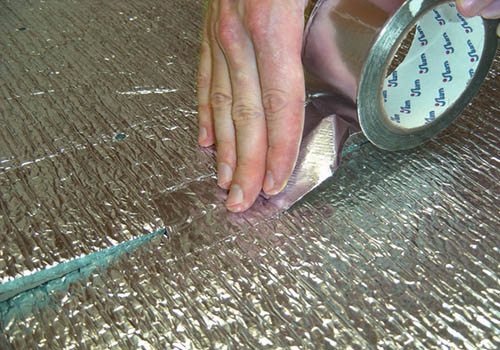

Adhesive tape with a foil surface goes well with insulation on a foil basis
- Insulation of the inner walls of a brick house should be done only after all materials have been processed. In the event of the appearance of fungal deposits, it is necessary to remove them immediately, trying to capture as large an area as possible.
Thermal insulation technology for building structures
Heat engineering calculations and instrumental measurements show that 5-10% of the heat leaves the dwelling through the floor and soil, 20-30% through the walls and the same amount through the attic floors and the roof. Slag insulation can be used for these building structures.
The sequence of work to improve the thermal insulation characteristics for the floor, ceiling, walls is different.
Floor insulation
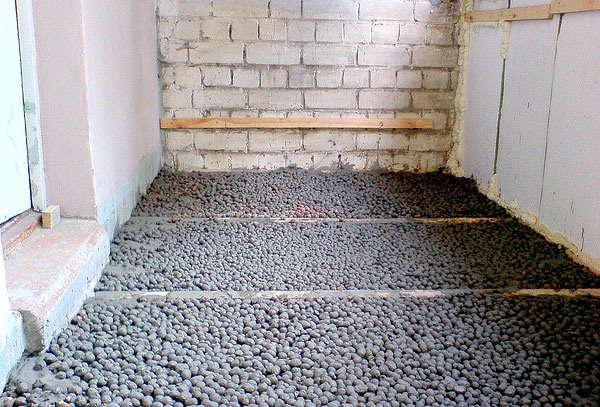

The slag layer is poured with a concrete screed
Depending on the design of the dwelling, floor insulation with slag in private houses is carried out in different ways. If, in the spring and after heavy rains, water appears in the basement, the basement must be waterproofed.
Brief instructions for warming an earthen floor:
- The surface is freed from debris, leveled, tamped if necessary.
- Equip waterproofing, for which the floor is covered with clay, dissolved in water, and thoroughly mixed to a dough state. Another option: a layer of waterproofing roll material is spread, the joints are glued with mastic.
- A layer of insulation of the required size is carefully poured - the thicker the better. For most regions, it is enough to add 15 - 20 cm.
- Pour 5 cm of sand, ram.
- Pour a cement-sand screed (DSP) 5 - 10 cm.
If the height of the ceilings in the basement does not allow you to equip such a "cake", you can fill the floor with concrete, using slag as a filler. Before pouring, arrange a sand pillow, which is spilled with water and rammed.
The sequence of work is simple:
- They remove debris, dirt, dust.
- Cracks and technological holes are sealed with cement mortar.
- The stove is treated with an antiseptic to prevent mold and mildew.
- Cover the surface with a layer of vapor barrier film (membrane), which will prevent the penetration of vapors from the basement, but will allow moisture to evaporate into the underground room. In houses with dry basements, a vapor barrier is not needed.
- DSP is performed on top of the heat insulator layer.
- After drying, they are finished with finishing materials (laminate, chipboard, linoleum).
Ceiling insulation
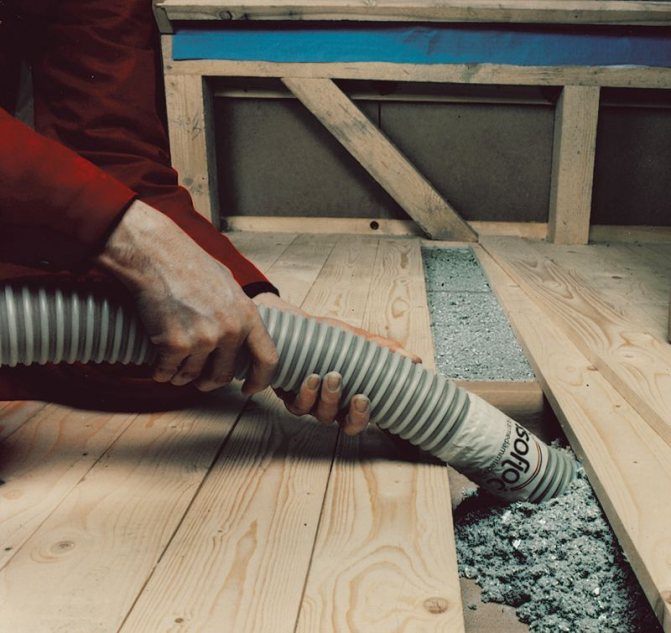

Insulation of the ceiling with slag from the attic
Technologically, the work on floor and ceiling insulation does not differ.
Before insulating the ceiling with slag, it is necessary to carry out calculations so as not to overload the structures. To do this, you need to find out the bearing capacity of the floor slabs and compare it with the mass of the backfill.
Slag as ceiling insulation has the same pros and cons as when used in other building structures.
The height of the non-residential attic allows you to pour a layer of any required thickness (taking into account the characteristics of the slabs).The insulation will retain its properties throughout the entire life of the house.
In order for the slag for ceiling insulation to retain its properties, precipitation should not fall on it. The dormer should not be closed tightly - this will help the moisture evaporate in a timely manner.
- Floor slabs are covered with a layer of waterproofing.
- The required amount of backfill is poured.
- Equip a concrete screed with a thickness of 10 - 15 cm, observing the slope for draining water during precipitation.
- Waterproofing is carried out with roll materials.
In order for the coating to last a long time, the instructions of the manufacturers of building materials are followed.
Insulation of hollow walls
Insulation of walls with slag does not require special preparations. Any slag is poured between the outer and inner layers of the brick as the walls are being built. It is better to choose a porous material of the middle fraction. Such characteristics will make the house warmer, there will be no voids between the pieces of backfill.
Step-by-step process of floor insulation
Pre-carefully check the plane of the log to determine how smooth they are. They can be trimmed if necessary. Floor insulation should consist of several stages. Insulation is a part of 3 heat-insulating layers: rough filling, heat-insulating material and floor covering.
First, a mesh is mounted to protect against the formation of their nests by rodents. Insulation is attached between pre-installed lags. After the installation of the mesh, slag is backfilled. The method of insulation also directly depends on what kind of foundation a residential building has. With a columnar or strip foundation, the process of warming begins with the filling of granular slag into the underground surface.
A subfloor is mounted on top, and the insulation is again laid. It is possible to lay a layer of slag between the rough and upper floor, which is additionally lined with insulation on top; on the subfloor, in addition to the slag, a waterproofing layer is laid.
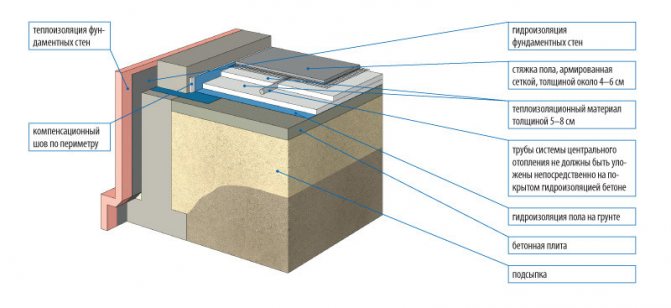

Floor laying scheme on the ground.
If the house is made of timber with a basement and it is necessary to insulate the floor on the ground floor, a double floor is created. First of all, the beams are installed strictly horizontally, at the same distance from each other. Bars 50x50 cm in size are nailed along the bottom of the beams, boards 25 - 50 mm in size (thickness) are taken and the subfloor is equipped. These boards are not attached to previously nailed bars. Then a vapor barrier layer is installed, and the insulation is laid.
At the end of the work, the flooring is laid. The entire space between the beams is filled with slag. It is prepared in advance for insulation: the required amount is mixed with lime so that there are no rodents. Lime is taken in the amount of 10% of the total volume of slag intended for insulation. During the preparation process, it is necessary to thoroughly stir the mixture so that a homogeneous substance is formed. There is no air gap between the slag-like insulation and the vapor barrier layer.
Advantages and disadvantages
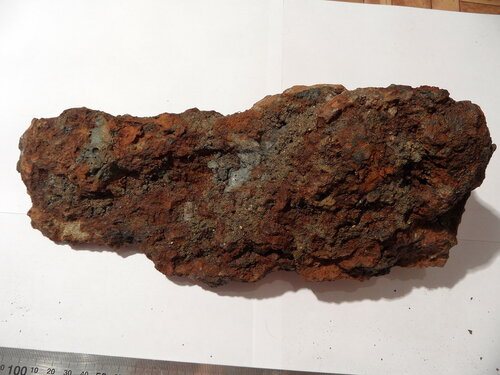

Metallurgical slag is not used in a humid environment due to its tendency to corrosion
Despite the difference in technical characteristics, all types of slags as insulation have similar positive qualities.
The material is different:
- ease of use;
- low cost;
- optimal air exchange;
- resistance to decay, fungus formation, mold spread;
- the ability to use in any premises;
- mechanical strength and chemical neutrality;
- inaccessibility to damage by rodents and insects;
- good indicators of thermal conductivity compared to monolithic concrete or brick;
- unlimited use time, subject to installation technology;
- fire safety.
The structure of the material imposes restrictions on the application. The high specific gravity is taken into account when designing load-bearing structures.
Slags are less effective in relation to modern specialized products for thermal insulation - polystyrene, foam insulation, mineral plates, etc.
Metallurgical type is susceptible to rust in high humidity conditions.
Industrial types of insulation are hidden with a screed or filled into the voids of the brickwork to prevent the ingress of harmful substances into the air of residential premises.
Pros and cons of slag insulation
Positive features insulation with slag fillers are:
- fire resistance;
- high speed of insulation;
- low price;
- ease of installation.
Negative points also have a place to be. Among them:
- heavy weight of insulation. Today, slag insulation is the heaviest insulation. Their use requires a good foundation (if the walls are insulated), strong structures (when insulating the floor, ceiling).
- some fillers absorb moisture, so the insulation must be well insulated against moisture.
Environmentally friendly slag
The porous structure of the slag retains heat well
The material in question is production waste. Understanding whether slag is harmful as a heater is important already at the beginning of designing a house.
The insulation technology and the place of use of the backfill do not provide for direct contact with a person. Dust and gaseous emissions do not penetrate the rooms, therefore they are not able to harm health.
When buying, you need to require a security certificate. Some slags emit a radioactive background.
Types of material
The following types of insulation are obtained from waste from metallurgical industries and the energy industry:
- domain;
- metallurgical;
- fuel and coal.
Different types are used to insulate the structural elements of the house.
Domain
The material is obtained by smelting pig iron. The composition includes the remains of rocks, fluxes and fuel ash. The pieces are very porous, the material is free flowing.
In private construction, the small (heavier) fraction is used for filling cavities in the walls or for screed concrete floors. The coarse fraction - light in weight - is suitable for filling attic floors.
This type of raw material is used for the manufacture of slag insulation materials.
Slag pumice, which has good heat and sound insulating properties, is most suitable for insulation. She also goes to the filler for cinder blocks.
Metallurgical
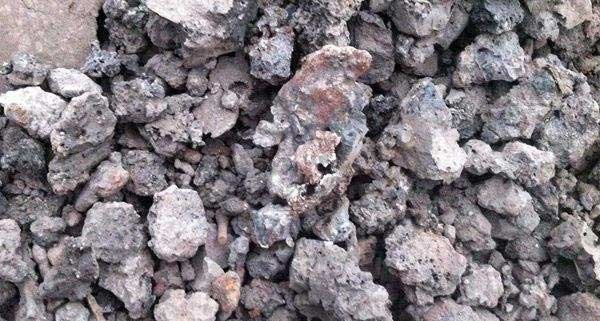

Metallurgical slag can overload the foundation
This type often includes waste from nickel and copper smelters, steel plants.
The material consists of sintered pieces of various fractions. They contain a lot of metal oxides, which is why the mass of the composition is large.
Fuel
The raw materials for the production are the remains of fuel oil and coal burned in boiler houses. Fraction and properties depend on the type of combustion (chamber or layer).
Fuel residues are hygroscopic, therefore, before backfilling, they must be dried for at least 2 months without being exposed to precipitation.
It is used for filling cavities in brick walls or under a concrete screed on floors and ceilings.
The main manufacturers of insulation
One of the manufacturers of slag products is "Trade House USK"... This company also sells insulation, carries out delivery.
Aleksinsky expanded clay plant is engaged in the production and sale of slag, specializing mainly in the sale of expanded clay. Often, coal and metallurgical companies are involved in the sale of slag, since slag is a waste product of production processes and the participation of these products.
Thus, slag insulation has many advantages... This is an inexpensive type of insulation, available for do-it-yourself. The material is presented on the market, the purchase and delivery of slag insulation has been established in many regions of the country.
Possessing high rates of thermal conductivity, insulation with slag fillers cuts costs for construction by reducing the main material when erecting walls. This affordable way of insulating premises has proven itself over the years.
How to insulate cinder block walls from the inside
The steam room in the bath is insulated from the inside.
Internal insulation of a house from a cinder block is not welcome, except that as additional thermal insulation, for example, you can use a special paint with ceramic hollow spheres or penofol. As independent materials, they are ineffective. Thermal insulation of cinder block walls from the inside is practiced in a steam sauna, when it is additionally necessary to protect the walls from moisture. In this case, the main thing is not to allow moisture from the steam room to get into the insulation layer. Naturally, only mineral wool can be used. Method of work:
- a wooden frame is erected on the inside of the walls in the steam room;
- mineral wool, preferably basalt, is laid between the guides;
- foil insulation is spread over the lathing - it is very effective for saunas, as it upholsters infrared radiation and does not let steam through;
- the second tier of the crate is installed on top of the penofol;
- a wooden lining is attached to the second tier.
Minvata must be laid in two layers and make sure that the joints do not coincide. The minimum layer of insulation is 10 cm. The main thing is not to forget to glue the joints of the penofol with a special (not clerical) tape. Also, you can not neglect the ventilation gap between the penofol and the wooden clapboard. Without it, reflective insulation simply will not work, besides, the condensation on the foam must evaporate. Penofol foil often contains small holes that are invisible to the eye. Therefore, to play it safe, you need to lay a vapor barrier membrane under the penofol.
Expanded clay for ceiling insulation
Expanded clay is a lightweight refractory material made from fired clay of fusible grades. Glassine is placed on the floor and reinforcing mesh is lined, on top of all this, expanded clay pours out. It is heat and sound insulating, resistant to moisture, rodents are not found in it. Expanded clay acts as a thermal cushion, which is poured from above with a screed. For the installation of expanded clay insulation will need the following:
- expanded clay
- waterproofer
- vapor barrier
- adhesive tape, aluminum tape
- stapler
- staples
Installation technology of expanded clay insulation
This technology is similar to the technology of laying other heaters such as clay or sawdust. First, the surface on which expanded clay will be poured is cleaned of dirt and old whitewash. A honeycomb structure is made from wooden beams over the entire surface. Then, with an overlap of 10 cm, they spread
wide strips of waterproofing... The joints are glued together with tape. After fixing, a reinforcing mesh is placed on top of the waterproofer and a layer of expanded clay is poured. Its surface is leveled. On top of the expanded clay layer, a vapor barrier sheet is laid and attached to wooden slats stapler or metal staples... A vapor barrier is placed on top of the expanded clay layer and beams, which is also fixed to the wooden structure with a stapler and staples.
Disadvantages:
- the material is heavy
- air "walks" between the granules
- requires subsequent filling or vapor barrier
- you need special equipment for high-quality work
An article on ceiling insulation in a wooden house has been studied in detail in this material:
What are the materials for insulation
There are a lot of materials. They are distinguished from each other by some important criteria. These include:
- Thermal conductivity. The best thermal insulation is possessed by a material with a lower index.
- Moisture resistance. The more insulation tends to gain moisture, the better waterproofing needs to be done.
- Flammability.It is advisable to choose a material that will not be flammable.
- Durability. Some isolates tend to wear out quickly and become unusable under certain conditions. This should be taken into account when choosing it.
- Environmental friendliness.
When answering the question, the better to insulate the ceiling, you can consider the following options:
- mineral, basalt, glass or ecological wool;
- foam or extruded polystyrene foam;
- expanded clay;
- PPU or penoizol;
- shavings or sawdust;
- tree leaves (usually oak) and straw.
Sometimes in the baths, the ceiling is insulated with earth or sand. However, this is quite rare. Leaves and straw are not used as often. It is an ecological material that is not durable and moisture resistant. Therefore, for its installation, it is necessary to know and strictly follow the technology.
Another important criterion is applied to the ceiling insulation - light weight. Thermal insulation should not weigh down the floor structure. In this regard, land and sand are used rarely and more often for non-residential premises.
Let's consider each material in more detail.
Materials (edit)
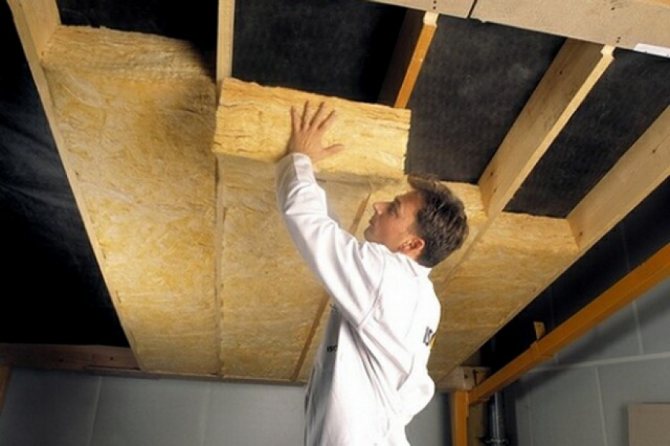

However, first of all, you need to choose the insulation itself. The following materials are used to insulate ceilings:
- mineral wool is one of the cheapest and simplest materials. Easy to fit and, if necessary, easily dismantled. Possesses good sound and heat insulating, fire-fighting and antiseptic properties. The disadvantages include low moisture resistance and weight. The material is quite heavy, which requires the installation of a solid frame for its laying;
- fiberglass - fiberglass mats (popularly called glass wool) are an affordable material with high noise and heat insulation properties, high moisture resistance. The disadvantages include the possibility of traumatic damage to the skin and mucous membranes resulting from contact with fiberglass;
- expanded polystyrene (best of all - extruded) - ideal moisture, noise and heat resistance. Very lightweight, which explains the ease of installation. The disadvantage is that it crumbles strongly, especially low-grade products, which reduces the quality of the finish, as well as its increased fire hazard. You can use other materials, for example, expanded clay. Good material, but almost inapplicable at home, due to the complexity of its use.
Most often, of the above methods, the first two options are used.
General recommendations
It is possible to insulate floors both during the construction phase and in a residential building. But before you start working, you need to clearly formulate the goal. This will allow you to determine the required level of thermal insulation and select the right materials. For example, if the attic has already been insulated, it is enough just to put a new one on the old layer of insulation.
If the attic is planned to be used as an attic, then the thermal insulation should consist of three layers: vapor barrier (laid with the rough side down, smooth - towards the thermal insulation), thermal insulation and waterproofing
It is extremely important to do this, because the residential part of the house is located under the ceiling, and the warm air rising to the floors contains so much steam that it can easily ruin any thermal insulation
Before starting work on insulation, it is necessary to check the condition of the roof, as well as the beams, if we are talking about wooden floors. They must be protected from moisture using a special compound.
It will be a mistake not to leave gaps in the thermal insulation layer. They will be needed to provide the necessary ventilation of the room and to prevent the formation of condensation or moisture accumulation under the roof.
In addition, all work must be carried out in dry weather, and even better - in the warm season.
Thermal insulation recommendations
In the process of insulating a floor base, several important nuances must be taken into account.In the future, the indoor climate will depend on them at any time of the year:
- The height of the insulating layer should be determined by the load on the coating: the greater the load, the thicker the filler layer;
- In the process of thermal insulation of a concrete base, it is advisable to use a reinforcing mesh in order to improve the strength characteristics of the finishing screed;
- It is advisable to lay the slag on waterproofing materials, since when wet, the thermal conductivity of the thermal insulator increases sharply;
- When insulating wooden coatings, the filler is poured in such a way that a small air gap of at least 4-5 mm remains between it and the finishing boards;
- To exclude the possibility of moisture getting on the heat insulator, be sure to cover it with a vapor diffusion membrane.
Wall insulation with expanded polystyrene
Styrofoam installation is carried out in almost the same way as the installation of mineral wool.
The first stage is surface preparation. Elimination of defects and application of a primer. Further, after preparing the adhesive solution, we proceed to the installation of insulation sheets.
Important: there should be no gaps or gaps between the plates!
After laying the insulation boards on top of them, you need to fix the reinforcing mesh. Further, this whole cake is carefully primed and putty, after which you can proceed to the final stage - applying a decorative coating.
When the house is insulated from the inside, the internal space of the room is significantly reduced. Nevertheless, this fact is not critical in order to completely abandon the insulation and in the cold season suffer from low temperatures outside the window or throw financial resources into the chimney to heat the house.
Before answering the question of how to properly insulate a house from a cinder block from the inside, you need to deal with the materials offered by construction stores. Today the market offers insulation based on foam and mineral wool. Editing both one and the other does not require any specific skills from the performer.
We insulate the cinder block house with polystyrene foam
The complexity of the installation of this material lies in the preliminary alignment of the walls on which they will be glued. In the case of a brick wall, plastering and puttying will be required. Without fail, wallpaper must be removed from the walls and paint residues must be removed.
Every owner of an apartment or house is undoubtedly dominated by the desire to preserve the final result for the longest possible time. That is why the use of a waterproofing substrate, even inside the house, should be indispensable. For what? In order to thus prevent the accumulation of condensate that degrades the foam.
For work you will need:
- five centimeter foam;
- comb or notched trowel;
- glue (usually Ceresit).
Installation work is extremely simple. On the prepared wall, with the help of diluted glue, insulation plates purchased from a building materials store are attached. Then they are thoroughly tapped to remove possible air bubbles from under them. In this matter, an important point is to apply the adhesive mixture directly to the wall and in no case to the foam sheets themselves. They must always be dry.
Further, for optimal insulation of the house, all cracks and loose fit of the material should be treated with polyurethane foam. This must be done in order to isolate the glued layer from changes in humidity in the room.
In the process of fixing foam plates, you can also use special fixing dowels. However, the adhesive solution will suffice. The final step will be the front finishing of the walls and their possible painting.
A fairly quick and practical way. Its most important advantage is the elimination of the pre-leveling stage of the walls.The thing is that mineral wool slabs are installed in a specially created metal structure. Then, in stages, the entire frame is sewn up with plasterboard plates, which will give your wall a perfectly flat surface.
So, a special structure is assembled from metal or wooden profiles - lathing. Plasterboard plates are installed on it. Next, the joints are putty and the wall is either painted or wallpaper is applied to it.
Features of the use of materials
There are no ideal heaters, each of them has its own advantages and disadvantages.
Sawdust
Sawdust costs a penny, has good thermal insulation characteristics, but is prone to decay and burns well. If sawdust is used in its pure form, they must be treated with an antiseptic and compounds that reduce flammability. This increases the cost of insulation and degrades the thermal insulation properties.
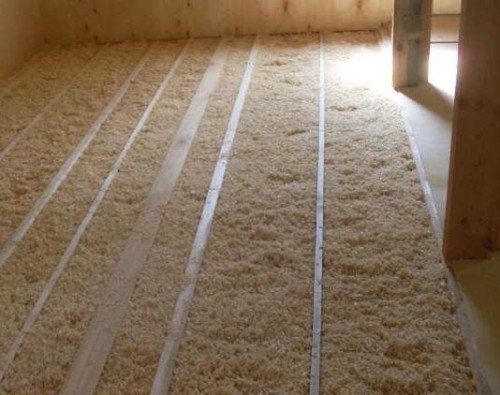

Quite often, a mixture of sawdust with clay and lime or cement and lime is used. The volumetric ratio "sawdust-cement-lime" - 10-1-0.5, "sawdust-clay-lime" - 10-5-1. First, a liquid solution is made, then sawdust is added in portions and mixed (in a concrete mixer or with feet) until a thick dough is obtained. The mixture turns out to be viscous, so its styling is more like modeling.
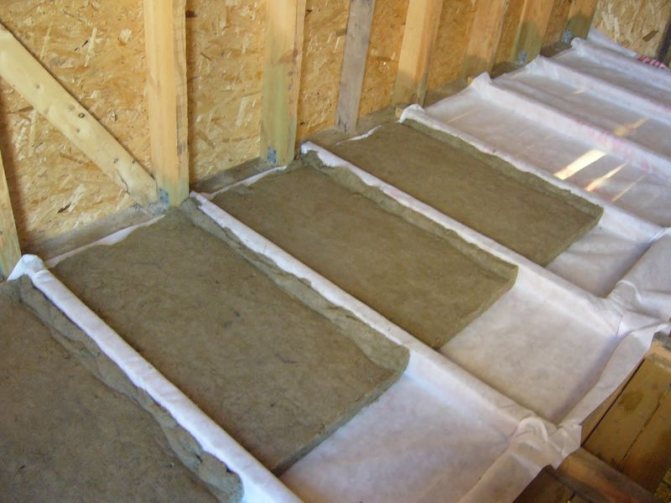

Sawdust-based solutions, at a low cost, have good thermal insulation properties, relatively low weight, are little susceptible to fire, moisture and rodents.
Slag and expanded clay
In most cases, these materials are simply poured onto the floors and leveled. They have average thermal insulation characteristics and for effective insulation, the layer thickness must be large, which increases the load on the supporting structures of the ceiling.
The advantages of slag and expanded clay are:
- Fire safety;
- simple insulation technology;
- availability of materials (slag can be found near any solid fuel boiler house and the cost indicated in the table is fair only for the lazy);
- immunity to decay and rodents.
Styrofoam and mineral wool
Styrofoam and mineral wool are laid on the surface in several layers with the joints in different places.
Mineral wool has good vapor permeability, therefore it is better combined with wooden structures.
Styrofoam does not lose its properties with increasing humidity and is more often used for laying on floor slabs. Since expanded polystyrene is a favorite treat for mice, it must be protected with a cement screed.
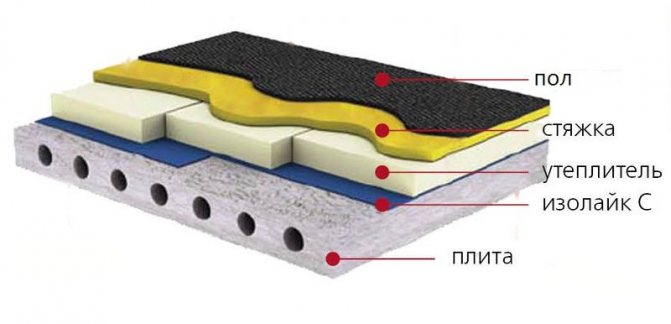

Ecowool
Ecowool is made of cellulose balls. It is blown into the voids between the ceiling and the floor of the attic using special devices. Ecowool itself is an expensive material, and due to the inability to perform work on our own, the cost of insulation increases even more. The main advantage of ecowool insulation is the absence of cold bridges.
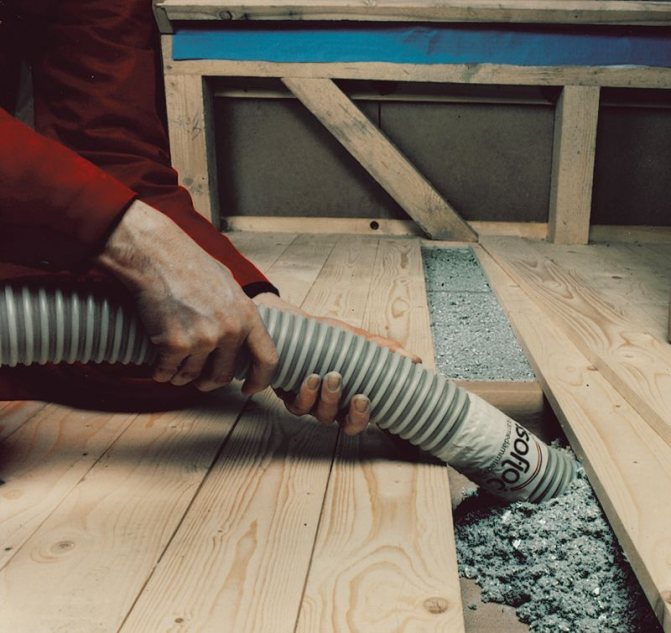

Warming with expanded polystyrene
Most often, thermal insulation is made with a sheet of polystyrene or polystyrene foam. These are the most common polystyrene foam insulation materials. In terms of thermal conductivity, it is on a par with mineral wool. However, unlike her, it does not have high moisture resistance and is harmless to humans. Therefore, insulation of the ceiling with penoplex or foam is often done from the side of the residential part of the room. The use of any of the materials will allow you to achieve a balance in the ratio of price and quality.
Like any other insulation, this one needs hydro and vapor barrier so that condensation does not form. After all, moisture destroys the ceiling. As such isolation, it is permissible to use:
- isospana;
- penofol;
- special films and membranes;
- penetrating mixtures and other things.
Despite the fact that sometimes the ceiling is insulated with penofol, it is sometimes used for waterproofing. Thermal insulation is carried out with penofol from the inside of the room. Since it has one foil side, this will reflect heat into the interior of the rooms.
Since foam is cheaper than foam, it is often used to insulate an apartment building, in a cellar to insulate walls, in apartments on the floors and walls outside, on the attic floor of private houses. This material is perfect if you are thinking about how to insulate the ceiling in your country house. Residents of apartment buildings rarely install thermal insulation on the ceilings. Since the apartments are located one above the other, heat loss occurs only through the outer walls. Styrofoam is placed on concrete floors so that the cold does not pass from below. This is mainly done by the owners of the lower floors, where the ground transfers cold in winter. In this regard, the ceiling in the apartment on the top floor is insulated, since it is not possible and advisable to put the material on the walls of the attic from the inside with your own hands.
Cellar insulation with foam can be carried out from the inside. This is especially true when the cellar is a basement. However, you should be careful, because there is a high probability that condensation will appear. The use of hydro and vapor barrier will correct this drawback. A kind of cake is made: inside it are expanded polystyrene plates, and layers of insulation along the edges of the sheet.
Coal slag in construction
Coal melts are widely used in modern construction. The compound formed between the slag and the binder is called cinder concrete. This new type of building material is several times superior to the heat-shielding properties of ordinary bricks. Slag concrete is durable, inexpensive.
Fuel melts are used in the manufacture of slag concrete blocks. They are less durable than metallurgical ones. When anthracite is burned, the highest strength agglomerate is formed. The highest quality melts are obtained by burning brown coal. The chemical composition of the resulting raw material provides for the absence of various impurities in it in the form of clay, ash, unburned particles and earth. In slag, special attention is paid to the quantitative ratio between soft and coarser parts. The use of a fine-grained substance makes it possible to obtain lighter concretes, but they are inferior in strength to heavy ones.
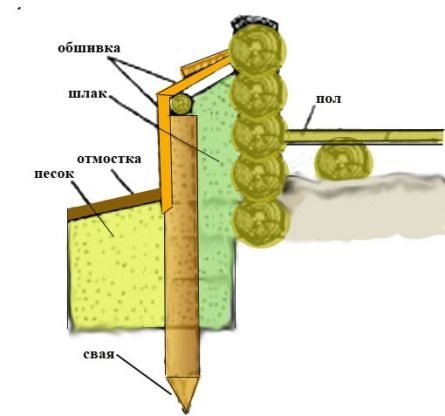

Insulation scheme for the basement of the house.
When building a house for exterior walls, the ratio between large and small parts should be 4: 6. All internal walls are made of fine-grained slag, which provides their strength.
The list of modern materials with which insulation is made is wide, and 90% are insulation made of mineral fibers and plastics. All inorganic materials are made on the basis of raw materials with a mineral composition. Slags belong to this class. Metallurgical slags by means of silicate melt are used to obtain mineral wool.
Slag pumice is widely used as a heater. It provides for the use of a special cooling mode. Astringent properties are completely absent.

